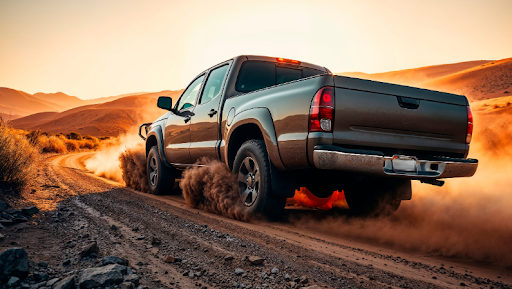
Aluminum technology is advancing rapidly, with use of the metal in bodywork no longer limited to top end and specialist vehicles. To find out more about this trend, Automotive Industries spoke to Novelis, which is a world leader in aluminum rolling.
The company produces an estimated 19 per cent of the world’s flat-rolled aluminum products. It is the biggest rolled products producer in Europe, South America and Asia, and the second biggest producer in North America. With industry-leading assets and technology, Novelis produces highest-quality aluminum sheet and foil products for customers in high-value markets including the automotive, transportation, packaging, construction and printing industries. The company has 34 operating facilities in 11 countries worldwide.
Automotive Industries spoke to Robert Georg, director of Automotive Sales and Marketing for Novelis Automotive, Painted and Specialties, and first asked him to expand on the Novelis range of products and services:
Georg: Novelis offers a huge variety of aluminum alloys with special customized abilities for automotive BIW applications, utilizing Novelis’ lightweighting know-how. Using trademarked Novelis Fusion technology, we are also able to produce a multi alloy sheet material for the next generation of automotive design. We are currently working with car makers on the design optimization of existing systems. This service includes the technical support during the tool design phase and the first test trials of new parts.
We are also in the process of constructing our new Innovation Centre in Sierre, Switzerland, which will be our lead automotive R&D facility. Our R&D resources will be focused at Sierre, which is closer to several automotive manufacturing facilities. This allows our scientists to be close to plant and customers.
AI: How does using lightweight Aluminum sheeting in automotive applications benefit car manufacturers?
Georg: Reducing weight means reducing fuel consumption and reducing emissions, which is a major priority for society. Intelligent lightweight design which utilizes aluminum helps carmakers decrease toxic emissions as well as increase the vehicle’s driving dynamic. Using aluminum in the mass production of high volume models is now commonplace among auto manufacturers, and it has proven to be highly efficient.
AI: How does your aluminum vehicle technology allow for the high-volume production of a sheet-base aluminum car structure?
Georg: This technology, which is compatible with the existing high volume production process, is based on a monocoque structure. The major innovation of the system is the adhesive bonding of structural sheet sections in combination with self-piercing rivets. Adhesive bond line optimization allows further weight reduction with improved structural performance in areas such as stiffness and crash properties. The weight reduction gives customers the benefit of a car that delivers excellent performance with good fuel economy, low emissions, easy handling, safety and driving pleasure.
AI: How do you think Novelis Fusion technology will impact the automotive market?
Georg: Novelis Fusion technology allows us to combine the best characteristics of different alloys into a single sheet. This opens up opportunities for new applications of Aluminum-based solutions. For example, increasing the strength of a 6xxx alloy with additional Cu content also increases the risk of corrosion. However, with Novelis Fusion we are able to cast a protective skin layer with specialist corrosion-preventive alloy around the high strength inner core. This new multilayer based material shows both good corrosion resistance and a higher strength. We could also combine good formability with high strength or good corrosion resistance with good formability or deep drawn capability and so on. We are also able to increase the strength of Aluminum alloys for BIW applications without having a negative impact on formability, hemming performance or corrosion resistance.
AI: What are the trends in the use of Aluminum, and in particular, conventional alloy development with specialties?
Georg: The market is looking for new alloy solutions that offer increased strength and better process performance. The driving forces behind these demands are the new legislation requirements for safety and improved environmental performance, coupled with modern automotive design trends. There is also a strong focus on cost reduction for the whole process chain of the Industry. Novelis’ experience in Aluminum lightweighting has helped us to constantly devise new solutions. Novelis Fusion is the latest example of this.
AI: You are supplying the Aluminum sheet for the hoods of the new BMW X5 as well as other prominent brands. What are the benefits to the carmakers in terms of weight reduction and improved performance?
Georg: We have shown that there is a 40 per cent to 50 per cent weight reduction when comparing steel and aluminum based designs. Lowering the weight of a vehicle allows for the optimization of other system components such as the lock or the hydraulics. The weight reduction also gives the car a lower mass point and a lower front axle weight load which offers the driver better, sportier driving dynamics. This supports the well known BMW slogan, “Freude am Fahrenâ€.
AI: Nearly all of the heat exchangers produced in new vehicles today are Aluminum. What critical variables must your product meet in order to satisfy the requirements of OEM’s and after-market component manufacturers?
Georg: All heat exchangers must be as light as possible while still providing the necessary thermal performance. Heat exchangers must offer corrosion resistance to the system as well as resistance to environmental conditions whilst keeping weight to a minimum. The whole system has to be well balanced between these different technical requirements. Novelis Fusion will provide an excellent material for these engineering challenges.
AI: Your technology is present in ‘body-in-white’ (BIW) vehicle structures, body panels as well as many other applications. In which of these areas do you see potential for growth?
Georg: The market penetration of aluminum has grown strongly over the last five years. Knipp, Gormezano & Partners carried out a detailed research project and forecast that growth will continue in structural applications and hang-on parts. I believe that there will be new aluminum-intensive vehicles in the future, but for now, most interest is focused on aluminum in combination with other materials. The company is also very excited about the potential of Novelis Fusion which will allow us to go into new applications that we could not before.
AI: How do you meet the OEM’s demand for high quality, lower cost, and just-in-time delivery?
Georg: In Europe, we have a unique aluminum automotive sheeting capability through our two production routes in Nachterstedt, Germany and Sierre in Switzerland. This allows us to offer a wide range of specialist products which are tailored to the customer’s specific needs. All our internal processes and installed assets undergo continuous improvements and testing so that we can ensure excellent quality, cost and delivery performance in the future. We have installed online quality systems which are able to control and document the quality of the products during the manufacturing process of our high-end products.
We are continually adding to, and upgrading, our technical solutions. The new laser cutting centre in Sierre has been added to our existing laser facility in Nachterstedt. Both are able to produce very flexible sheet geometries, with an optimized laser cutting surface. This reduces the amount of scrap metal that a customer pays for, and avoids additional stamping processes. We are confident that these and other internal activities will ensure Novelis’ future position as an excellent, innovative and leading partner in the automotive industry









More Stories
Sonatus – The industry is shifting gears to software
Cybord warns of dangers of the stability illusion
HERE building trust in ADAS systems